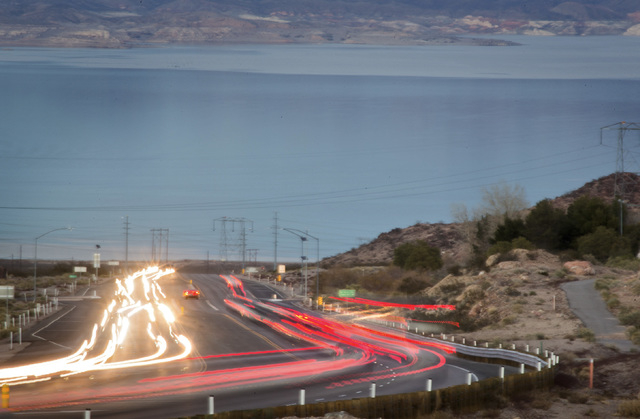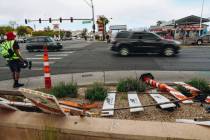Transportation officials try to ease asbestos concerns

Nevada Transportation Department officials tried to reassure wary Boulder City residents Tuesday that Interstate 11 construction crews would take special measures to keep naturally occurring asbestos from becoming a health risk.
A University of Nevada, Las Vegas geology researcher discovered traces of asbestos in the area in December. The Transportation Department, collaborating with the Regional Transportation Commission of Southern Nevada on the 15-mile Boulder City bypass, has been working to determine how much of the substance is present, whether it would affect construction of the project and how the presence of asbestos could be mitigated.
At a public meeting at Boulder City’s Elaine K. Smith Center, about 100 people heard a presentation on how crews would deal with the asbestos, then peppered a panel of seven experts with questions. The department is taking public comments on the state’s plans through Nov. 4.
Steve Cooke, the department’s environmental services manager, said concentrations of asbestos within the rocks and soil aren’t the problem — it’s when that dust becomes airborne and spreads into the environment that it could become harmful.
The Agency for Toxic Substances and Disease Registry says being exposed to asbestos doesn’t mean an individual would develop health problems. But it could increase a person’s chances of contracting lung cancer and exacerbate pre-existing lung conditions.
Cooke said the most effective way to minimize the likelihood of asbestos from becoming airborne is to water the site often and abundantly.
Vehicles will have reduced speed limits to minimize dust.
Ambient air monitoring already has begun around Boulder City, and readings will be taken daily for the next three years to monitor the level of asbestos.
Construction workers will be required to wear disposable Tyvek suits that will be discarded daily when they work on the project. Vehicles in work zones will be washed daily as well.
When a UNLV research team led by Brenda Buck discovered asbestos in the Boulder City area, the department ordered its own soil samples, from the surface to 200 feet below grade, the approximate depth of some of the road cuts.
The department took 611 samples and found 154 of them with less than 0.25 percent concentration of asbestos, the level at which it is considered “restricted material.” Only 12 samples were above the 1 percent level at which the Occupational Safety and Health Administration requires mitigation activities.
The highest levels of asbestos were found on the eastern portion of the project, near where the bypass will tie into the highway leading to the Mike O’Callaghan-Pat Tillman Memorial Bridge over the Colorado River.
Residents commenting at Tuesday’s meeting were most concerned about construction work during spring’s windy days. The project is due to start in May.
Cooke said on extremely windy days the project probably would be shut down.


















